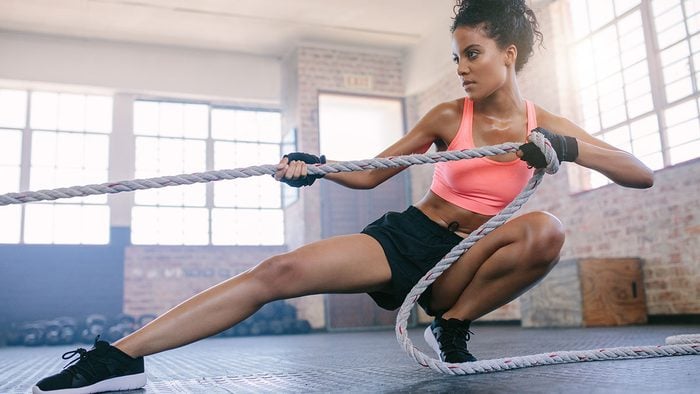
The definition of the best workout
“Ultimately the best workout for any age needs to be one that fits your time constraints and that you enjoy,” says Kyra Williams, NASM-certified personal trainer and coach for USA Weightlifting and USA Powerlifting. “If it doesn’t work for your schedule, it’s hard to get to, and if you tend to be all or nothing, you will end up with nothing.” The key, experts say, is to find something that you can stick to long term. Finding something that boosts your energy and your mood will fit that bill. And if you’re looking for a post-workout treat, try this smoothie.
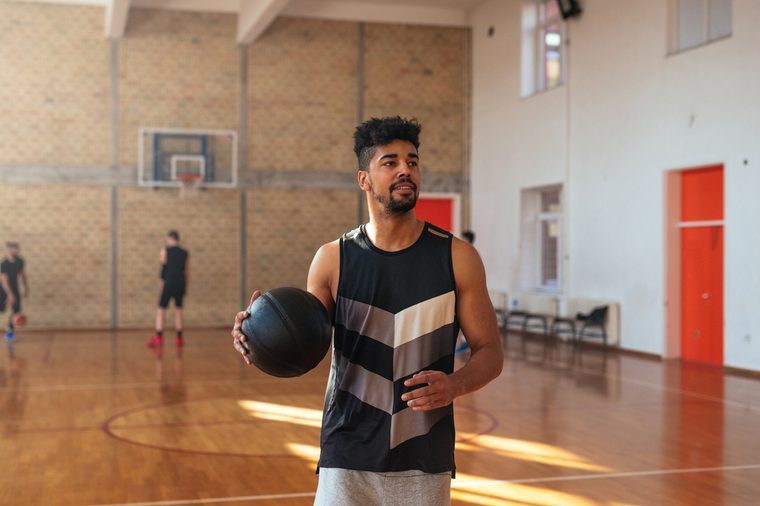
The 20s workout
Be sure to incorporate cardio, weight training, balance work, and stretching, says Rachel Straub, MS, CSCS, co-author of Weight Training Without Injury. She suggests sneaking in cardio at least three to five days a week, whether you prefer running, swimming, cycling, or walking. “Finding a form of cardio exercise that you enjoy — and can do properly and consistently, preferably for life — is most important,” she says. She also recommends weight-training at least two days a week, challenging all major muscle groups: back, chest, arms, core, shoulders, and legs. Check out this 20-minute full-body workout.
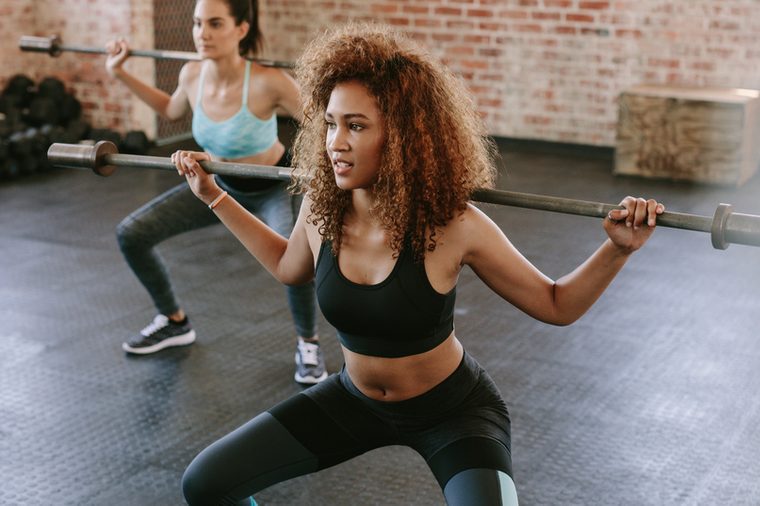
20s focus: Consider cross-training
Your body is most likely in its peak physical condition and is ready to tackle any challenge you throw its way. Your muscles will recover quickly — more so than it will in future decades — which is why one of the best workouts is cross-training. “This is when you combine both anaerobic (strength/resistance training) with aerobic (cardio) elements,” explains James Shapiro, an NASM-certified personal trainer based in New York City. “Think of this being more of your foundation for the rest of your lift — you’ll learn how to perform movements with proper technique.” Learn the 50 fitness myths that can seriously damage your health.
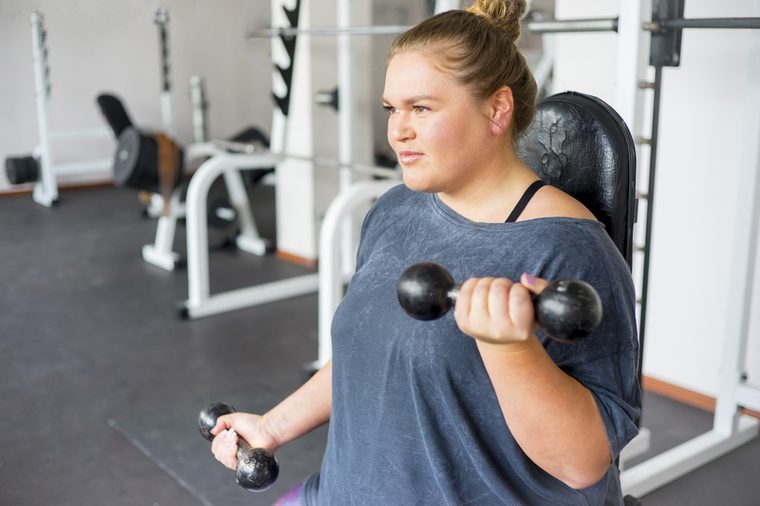
20s focus for women: Get into weight training
Too few women at this age reach for weights, says dietitian and nutritionist Roger E. Adams, PhD, founder of eatrightfitness.com. “I push all my young woman in their 20s to lift weights and do other load-bearing activities as much as possible, not only to improve body composition and build muscle, but to increase bone density during this critical period,” he says. “Incorporating weight lifting using large muscle groups are key.” He recommends adding squats, deadlifts, standing presses, and other powerlifting-type movements to your workouts. Here are Halle Berry’s 6 tips for getting in the best shape of your life.
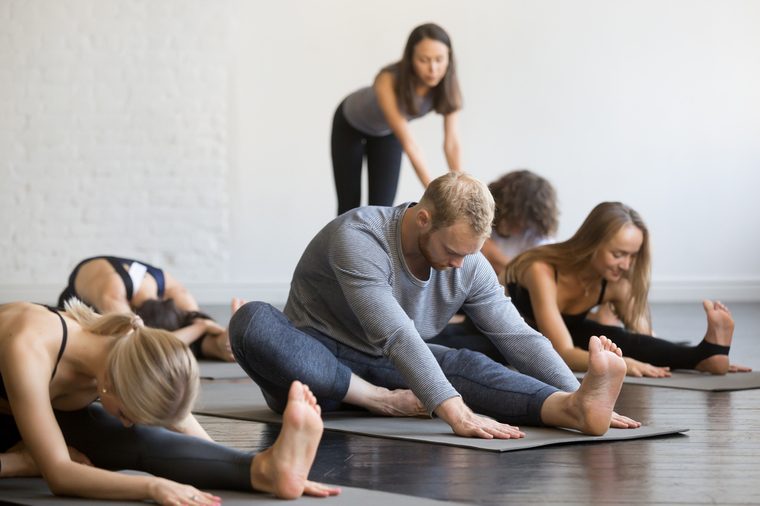
20s focus for men: Do yoga
While yoga is an excellent exercise for the body, mind, and soul no matter your age, it can be especially beneficial when practiced in your 20s. “Men in their 20s need to establish flexibility and mobility, particularly in today’s current culture, where we sit more than ever before and are glued to our smartphones,” says certified personal trainer Chris Ryan, founder of Chris Ryan Fitness. “Yoga will lead to healthier posture, spinal alignment, and looser muscles — especially amongst men, who have more muscle mass in their chest and shoulders compared to women, which causes tightness with excessive sitting.” Learn about the 8 yoga moves that will help boost your energy.
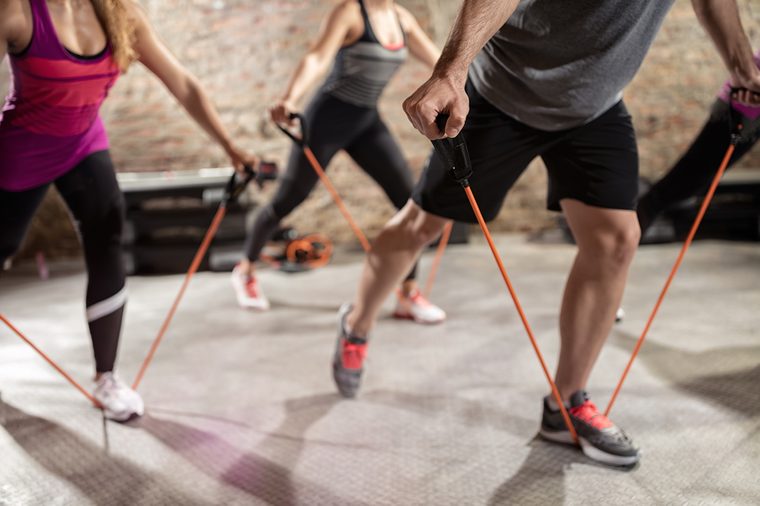
The 30s workout
Your body is no longer at its peak, and you might feel it takes longer to recover from workouts. For this reason, Shapiro recommends you add resistance training at least twice a week if you haven’t already. “This is particularly an important time for women to start resistance training to offset any potential future complications from osteoporosis or arthritis,” he adds. Do this in addition to interval-based cardio like spinning at least three times a week. Here are some resistance band workout moves that will help increase your intensity and strength.
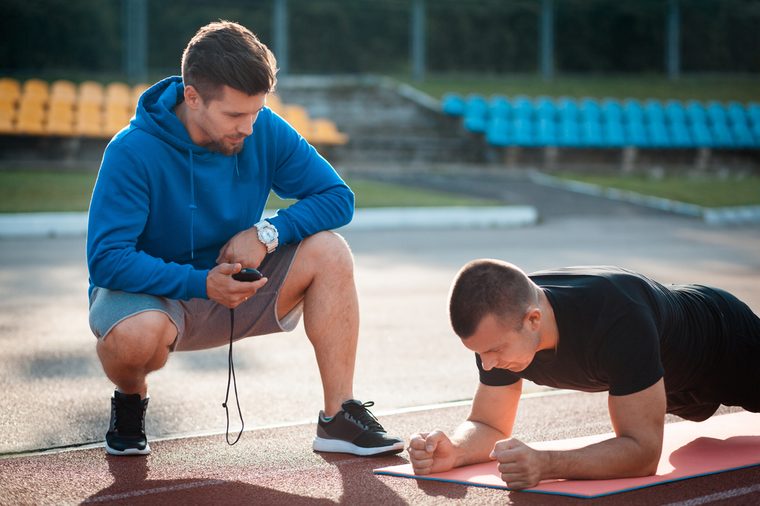
30s focus: Get some coaching
You’re already starting to lose muscle: A study published in Muscle, Ligaments and Tendons Journal found that muscle mass and strength begin their steady decline once you turn 30. But you can slow that consequence of aging, says Ryan. People lose strength faster than they lose muscle, he explains, which suggests a loss of muscle quality — and that can be fixed by strength training. Ryan recommends getting a coach to help with your form and adding a variety of functional lifts like presses, pulls, squats and deadlifts. And if you’re not feeling quite confident yet, check out our beginner’s guide to strength training.
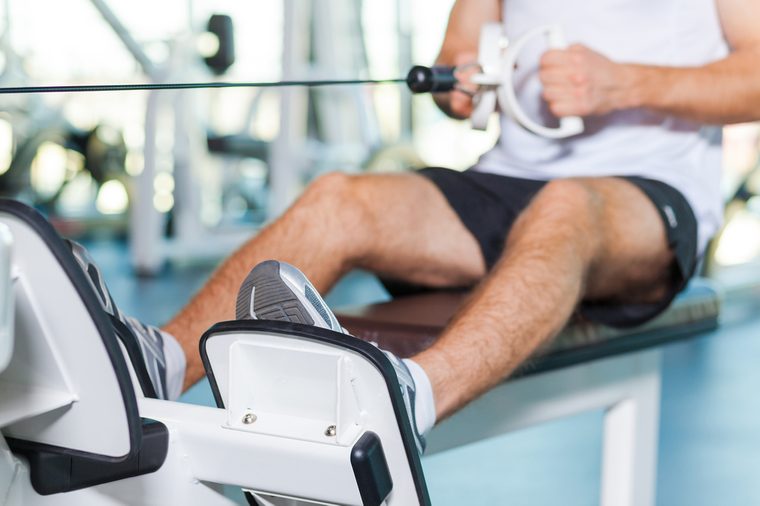
The 40s workout
“If you are only doing cardio exercise — which is a tendency for many — it’s time to add strength training exercises, at minimum,” Straub says. “With age, bone density tends to decline, as does strength and muscle mass, so now more than ever, strength training exercises are essential to add to your routine.” Along with moderate-intensity cardio most days, aim for at least two days a week of strength training, working all major muscle groups each time.
Here are 7 myths you need to stop believing before you can get abs.
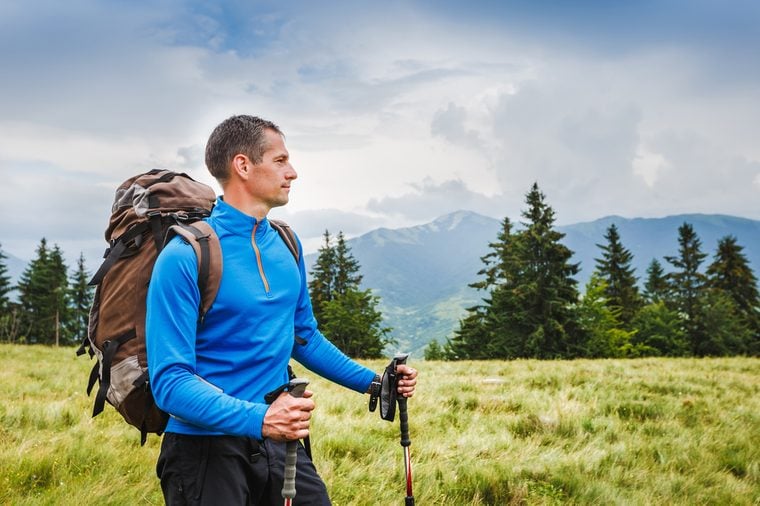
40s focus: Take a hike
Think of exercise the same way you do retirement planning: Starting late is better than never starting at all. If you haven’t already found a workout you love, hiking is a great pick. Just don’t jump in too quickly, warns Shapiro. “The gradient of your hike should be based upon your fitness level,” he says. “The goal here is to create more aerobic challenges and strength in your legs and hips, and gradually build up both distance and incline to avoid injury.” To make your next hike easier, check out these 6 tips.
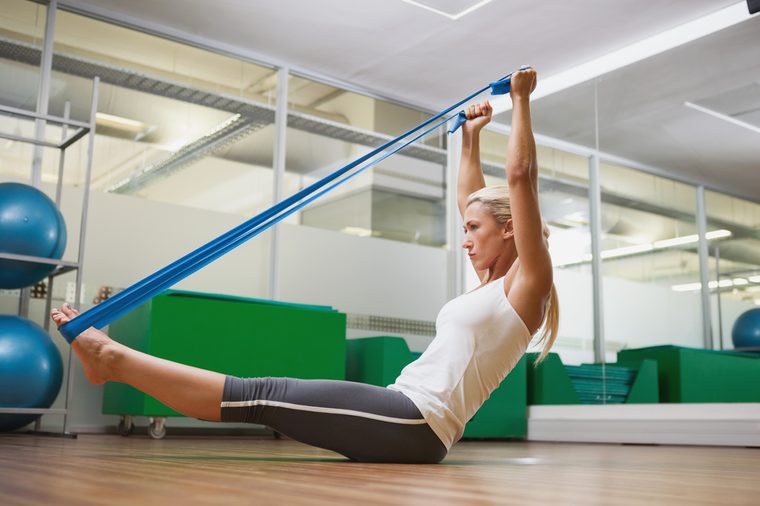
The 50s workout
“Our bodies start to slow down the process of bone and muscle development,” says Shapiro. This is why the most important exercise here is — you guessed it — to continue resistance training, primarily for hips and shoulders. “Resistance or strength training improves bone density and has been shown to slow the aging process with the loss of lean body mass,” he says. “Both men and women should perform consistent training to see tangible results.” Schedule 30 minutes of walking at least five days a week, too. You can break up the 30 minutes into three 10-minute sessions if that’s easier on your joints. Find out how to burn more calories while walking.
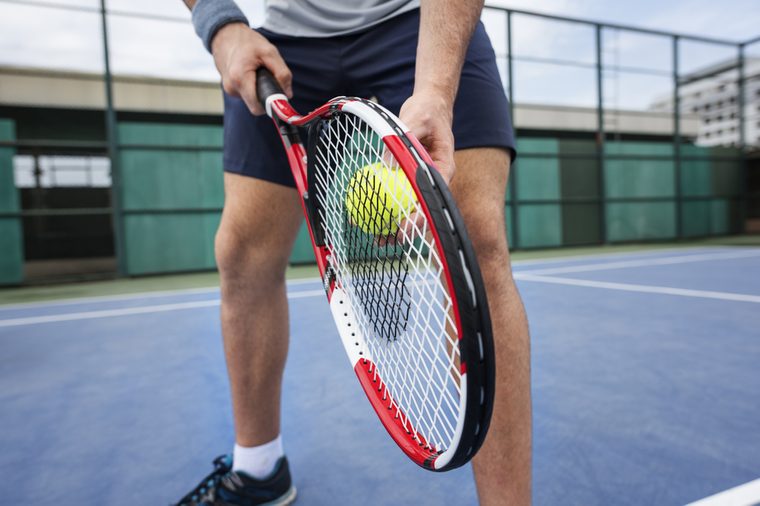
50s focus: Leg strength
“Your legs are the base support for your frame but also are the strongest and biggest muscles of the body,” says Ryan. Training those big muscles can help save your brain: Research published in the journal Gerontology linked increased leg power to slower cognitive aging. “Brains aged better both structurally and functionally with stronger legs, most likely due to the neurochemicals that stimulate brain cells,” explains Ryan. In addition to strength and cardio work, he recommends incorporating sports like tennis. Make sure you check out these top 5 reasons to strengthen your core.
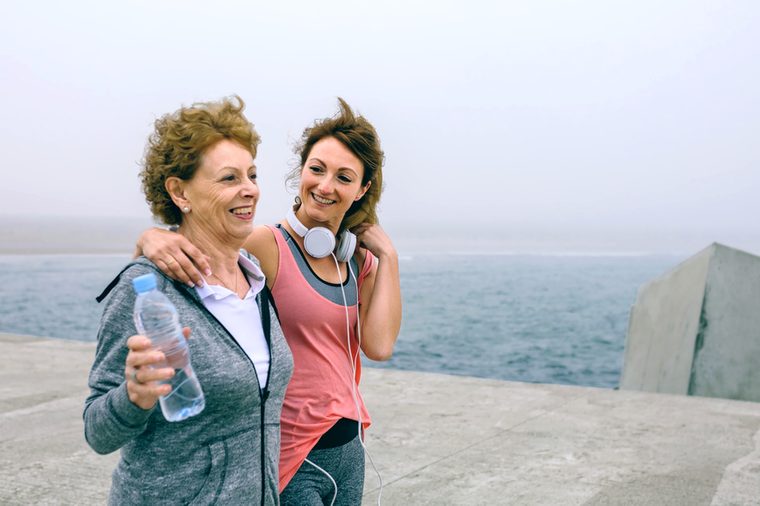
50s focus: Discover walking
If you’ve been running through your last few decades, you might want to ease the wear and tear on your joints by shifting over to power walks. “By this age, many have experienced some sort of injury that has limited their ability to exercise,” says Straub. Not to worry — now is the time to try walking, especially if you have bad knees. While it might take you longer to complete a given distance, walking can be just as effective as running when it comes to lowering your risk of certain diseases, according to the American Heart Association.
Are your cravings out of control? Here’s how to make better, healthier food decisions.
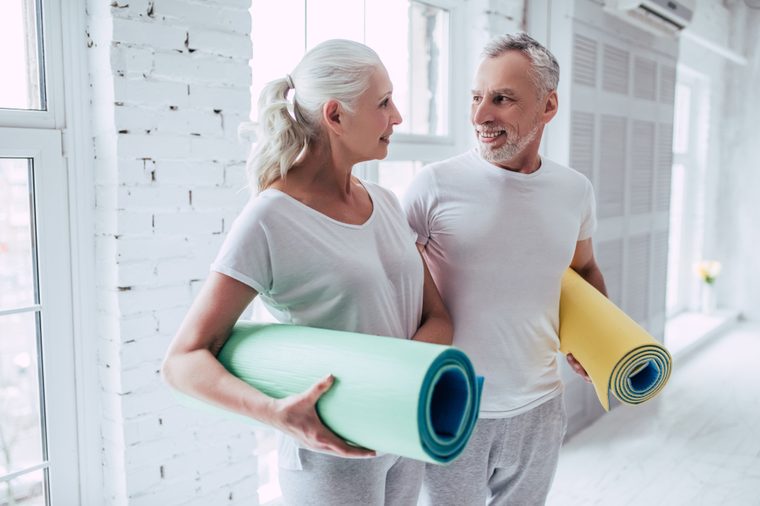
The 60s workout
If you feel like your energy is slipping away, exercise can solve your problem, says Straub. Your 60s are the most important time in your life to exercise, she stresses. “Do what you can and aim for exercises that improve (or maintain) your independence,” she says. “If you can simply walk consistently for cardio, perform bodyweight exercises (like situps, pushups, and wall sits), and attend a Pilates or yoga class one to two days a week, you will be far ahead of most seniors.” Consistency is key, as is maintaining proper form in everything you do. “Now is not the time to go compete with the youth and take on high-intensity exercises that can lead to irreversible damage,” Straub adds.
Love yoga and Pilates but don’t have time to do both? Check out this combo class.
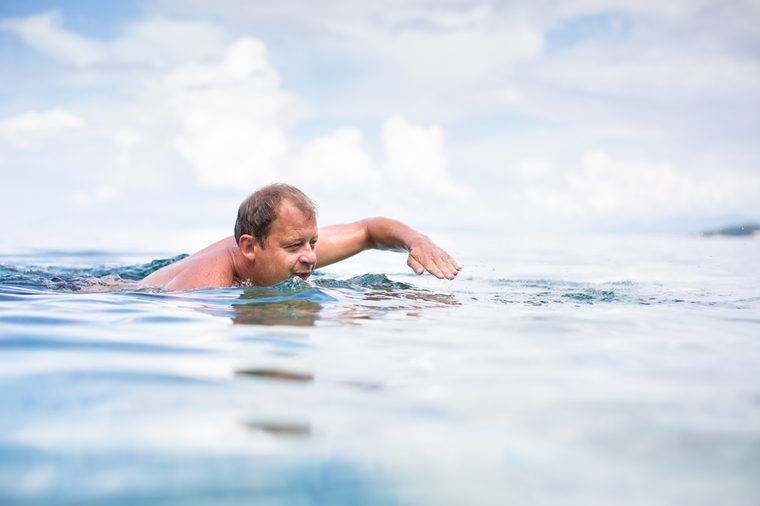
60s focus: Reduce the impact
“Minimal-impact training minimizes ground force and focuses more on resistance without damaging the musculoskeletal system,” explains Shapiro. “Exercises include swimming, rowing, using the elliptical machine, spinning, and stationary core exercises.” Because any of these workouts will strengthen your body’s aerobic system and core, they’re essential for this age group, whose certain organ functions are more prone to slowing down. Just make sure you don’t make these 5 common exercise mistakes.
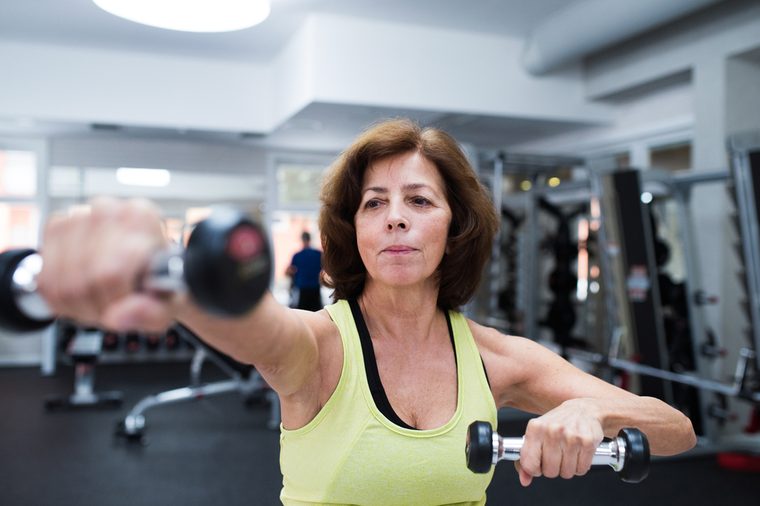
60s focus: Work your muscles
Ryan says women in their 60s can especially benefit from lifting weights twice a week. Research published in the Journal of the American Geriatrics Society revealed that older women who engaged in strength and resistance training had fewer lesions in the white matter of their brains — a sign that their memory and other mental functions were holding up better. Those who strength-trained only once a week didn’t see the same benefits. “Strong is smart and smart is strong,” adds Ryan. Check out these two abs strength workouts that don’t involve a single plank or crunch.
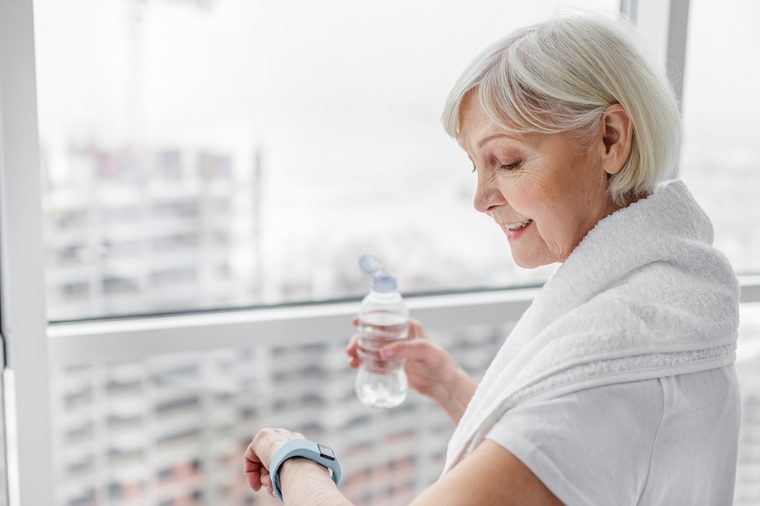
The 70s workout
Both men and women would benefit from bodyweight training with assistance — see a fitness trainer, look into resistance bands, or try the TRX suspension system, says Shapiro. “Balance exercises that work with coordination help both men and women in this age range maintain independence, strength, cognitive awareness and… mobility,” he adds. “Remember that cardiovascular levels aren’t as high at this age as they were in your 60s.” He advises giving yourself ample time for recovery between exercises. Aim to get low-impact cardio at least three times a week.
Here are 25 heart-health secrets cardiologists want you to know.
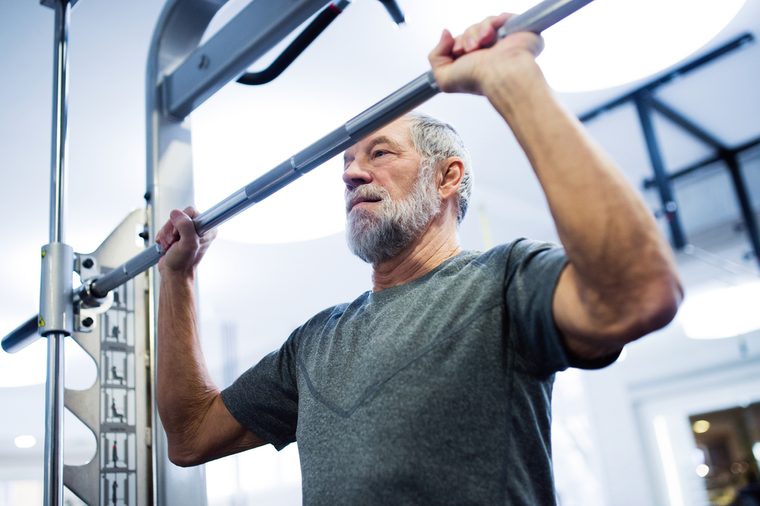
70s focus: Pursue lower impact exercises
According to Shapiro, both men and women can benefit from bodyweight training with assistance (such as the TRX suspension system) and re-training the core musculature. “Balance exercises that work with coordination help both men and women in this age range maintain independence, strength, cognitive awareness and improve mobility,” he says. “Just remember that your cardiovascular levels aren’t as high here as they were in your 60s, so you give ample time for recovery between exercises or sets of movement.”
But your diet is also a huge part of keeping a youthful complexion, so make sure you load up on these foods.
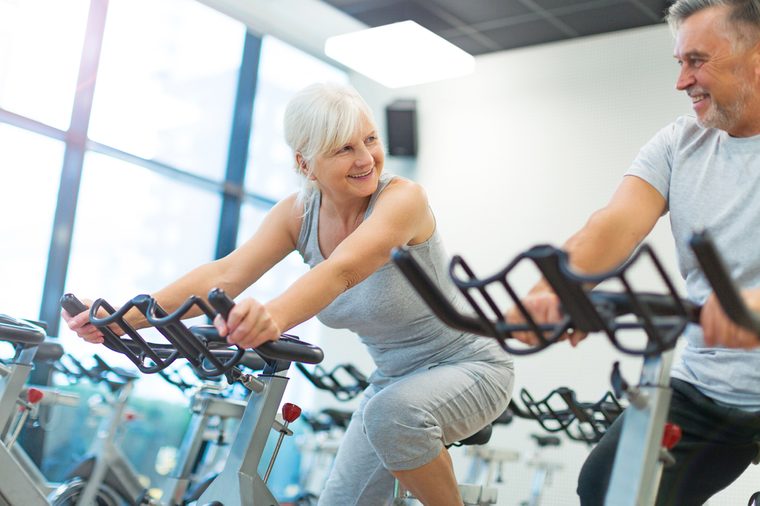
70s focus: Stick with safe cardiovascular movements
During this decade and going forward, Ryan suggests practicing safe cardio moves that help minimize visceral fat, the deadly fat that accumulates around your midsection. And don’t stop strength training, which can improve your balance and protect against falls, helping preserve your independence. “Focus on building strong shoulders, spine, and core,” he says. Plus, keep your legs strong — along with your heart and lungs — with regular walks or hikes, which will help aid brain function, keep you lean and trim, and prevent injuries, says Ryan. This is the best anti-aging workout.
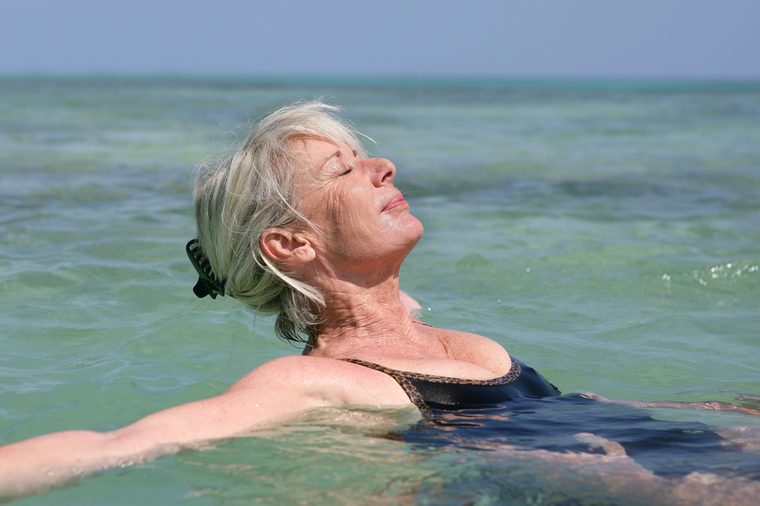
The 80s workout
Nearly any activity you do will be good for your mind and body. Resistance training, for one, becomes essential, as it can help maintain the muscle strength you have left. Consider hopping on a strength-training machine at your local gym, such as leg extension or cable pull. Next, don’t miss these anti-aging treatments doctors actually use.
